Kropki (Dots) – territory rules explained for no-territory players
What are exactly the differences?
In territory rules:
- one may, but does not have to enclose enemy dots
- an enclosure need not be of minimal area
- there is no 'STOP' button: the game ends when there are no empty places left, or when players *agree* to finish, or when someone resigns
Also, although this is not a rule, but a custom, one usually starts the game on an empty board (without 'cross').
What are the consequences?
Because of 3., it is important to not only capture enemy dots, but also to have some territory. Territory is a region which is encircled by your dots, but the enclosure is not yet made, and which has some empty intersections. For example, in this game
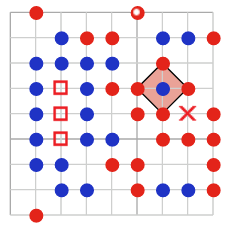
the empty points denoted by square are in blue's territory, and the single empty point denoted by a cross is in red's territory. This game will therefore likely end with a draw: by rule 3., players will have to play as long as there are empty intersection, so after some time the following position (or similar) may result:
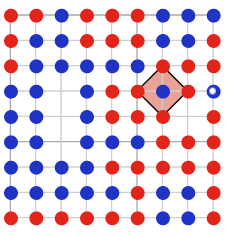
Now the only places left are the 4 places inside territories. Red moves now, let's suppose red places the dot in his own territory, and then blue must play inside her territory:
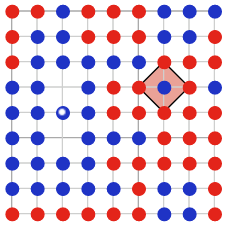
Now the only 2 places left are inside blue's territory, so red has no choice but to play there. This is the final position, which is a draw:
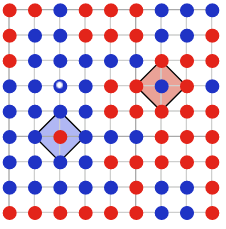
Such an endplay is quite boring, especially on larger boards. To speed up that part one may 'count territory'. This results in a simulation of the game until the end. When there are no places left outside territories, each player is assumed to play into their own territory first. The result obtained by such a simulation is the final result of the game.
For example, in the position
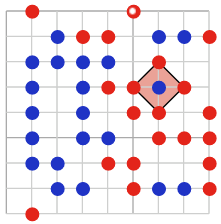
the players could *agree* to finish the game and count the territory (by pressing 'finish game' button and selecting an appropriate option). Then the final stage would look like that:
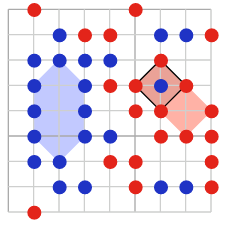
and the result would be 1-1.
Why should I (sometimes) wait with enclosing enemy dots?
The most common reason is that one does not want to waste the territory that could be inside. For example, in this position:
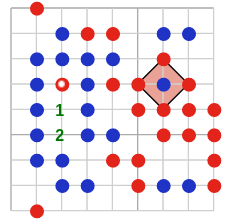
blue should not enclose the marked red dot. If blue does that, she would lose the 2 territory places denoted by '1' and '2', and so the game will likely end with a draw. On the other hand, by waiting with the enclosure, at the end of the game red will have to place one dot more into one of the places '1' or '2', and so blue will (most likely) win 2-1.
Sometimes, there is another reason for waiting. Consider this position, where the marked red dot has been just played:
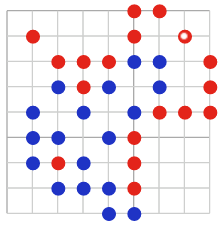
Blue can defend her dots by making a larger enclosure (recall rule 2, enclosure needs not be of minimal area!):
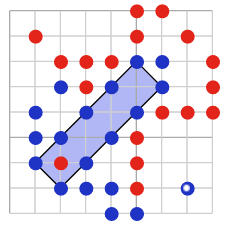
Note that she can play anywhere and still make this enclosure, but it is important to press 'I enclose' button before placing the dot!
If in the initial position the red dot were already enclosed:
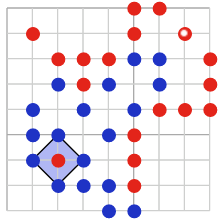
then blue would lose 3 dots (at least).